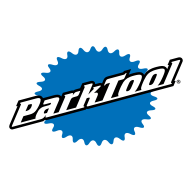Spacers for the freewheel are needed but they need to be the right size, to fit inside the freewheel indent and keep the frame off the freewheel spinning (The outter edges of the indent). I've run into that problem once or twice on my Townie Electra 21D and 7D and I just got some washers from the big box hardware store and took a rotary tool to the outside of the washer to fit inside the indent. I guess it would be good to have a handful as specific spares so you dont have to do any work to the washers. Just throw them in. I seem to always lose or misplace the lips, washers, nuts. But I change my ebike setup frequently, different motors, battery configs, bike frames.
The spacers need to have an inside diameter just large enough to slip over the axle tube, and an outside diameter just small enough to fit down inside the body of the freewheel gearset. Take a look at the freewheel body diagram at the following website:
We put the freewheel vs cassette head to head to see which is better for your needs and budget, so you can make the best choice.

bikefaff.com
Observe that the axle and the tube surrounding it (called simply the “spacer” in the above diagram) remain fixed, while the bearings permit the wheel to turn – either with the motion of the bicycle or with the motive force applied by the cranks and chain. Now observe how the axle and axle tube are attached to the frame. In a standard bicycle with a freewheel hub, the lock nuts at the ends of the axle tube butt up against the frame dropouts, the axle protrudes through the dropouts, and a quick release snugs down the connection to the frame.
In the case of a motorized wheel, measures are taken to discourage the axle from turning in the dropouts. “Flats” are machined into the (oversized) axle and “anti-rotation” washers (and perhaps an anti-rotation arm) are installed between the dropouts and the body of the freewheel to further discourage the axle from rotating. Herein lies our problem. Now our anti-rotation washers must butt against a non-rotating surface on the freehub body in order to permit the rotating parts of the hub to move freely. . . the surfaces identified as the “bearing cones” in the above-referenced diagram. (These bearing cones engage the inner races of the bearings.) The anti-rotation washer on the non-drive side is not a problem. As long as the washer’s outer diameter matches the diameter of the freewheel bearing cone, and as long as the dropout spacing matches the width of the freewheel assembly, the freewheel will rotate smoothly when the axle nuts are tightened. The problem, as we see, is on the drive side.
Have a look at the photo illustration labeled “A freewheel-type hub and a freewheel” in Park Tool’s “Freewheel removal and installation” instructions:
How to remove and install threaded freewheel systems as well as single-speed BMX/freestyle bikes.

www.parktool.com
What is shown clearly in this illustration is the bearing cone on the drive side that must be engaged by a spacer pressing against the dropout in order to allow the body of the freewheel to rotate. Once the gear assembly is screwed onto the freewheel hub, that bearing cone is now buried down inside the gear assembly. The more gears you have, the deeper it will be buried (and the more dropout spacing you’ll need).
You must install a sufficient number of spacers to permit the dropout to press (via the spacers) against the bearing cone. If there is a sufficient stack of spacers, then the dropout will not touch the shoulder of the smallest gear when the axle nuts are tightened. This will permit the freewheel hub and gearset to turn freely, if you’ll pardon the expression.
I have found that the 7-speed “Drift Maniac” freewheels I have purchased require a stack of a half dozen “M12” washers which have an actual inside diameter of 13.2mm and an actual outside diameter of 23.6mm. I’m using them on motorized wheels (from Ebikeling) which have an M12 axle with a 1.25 metric thread. The spacers can be purchased from McMaster -Carr. Description: “M12 Screw Size, 13.500 mm ID, 24 mm OD, stock number 98687A114.” A pack of 50 washers costs $10.50 plus another $10 for shipping and handling.







